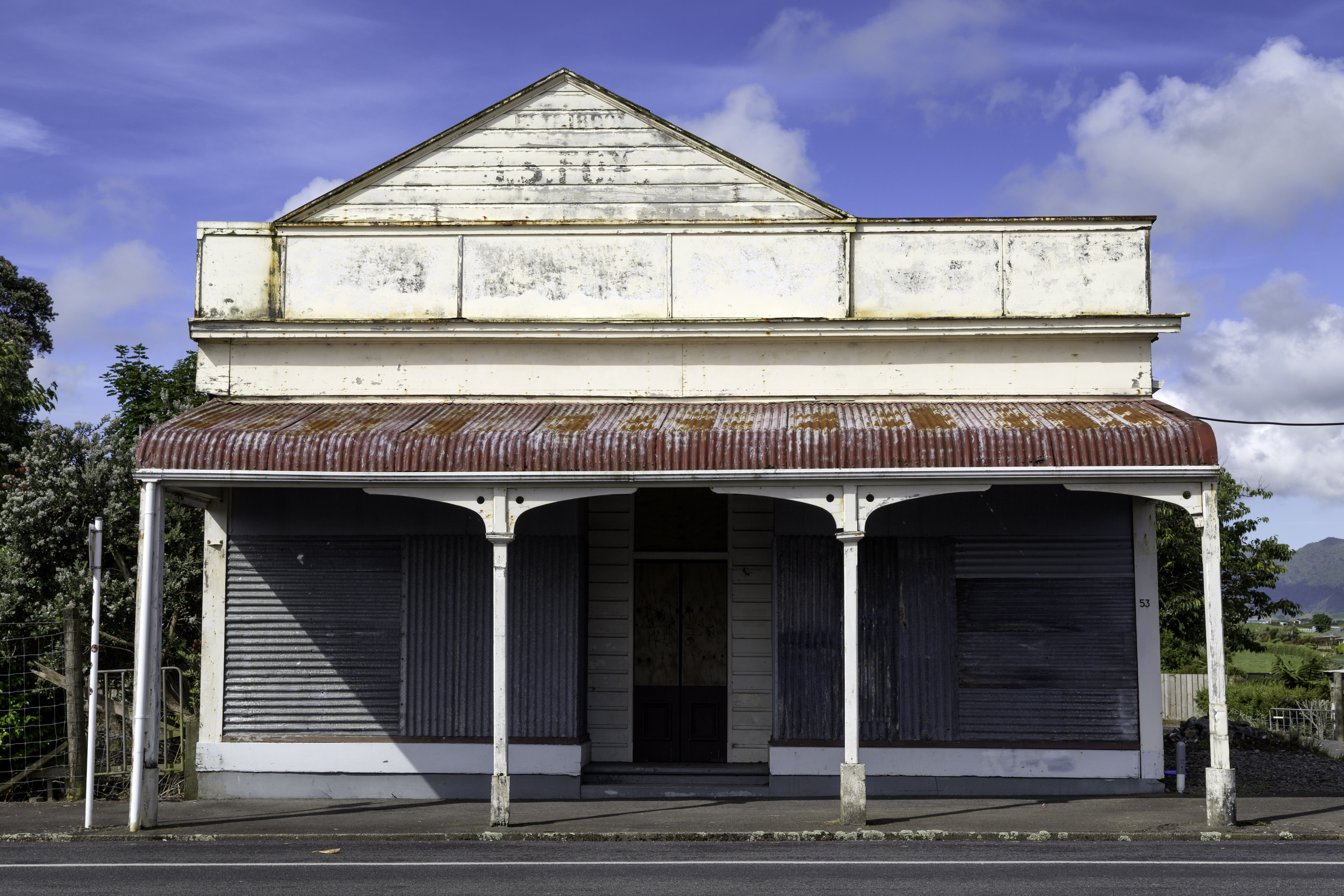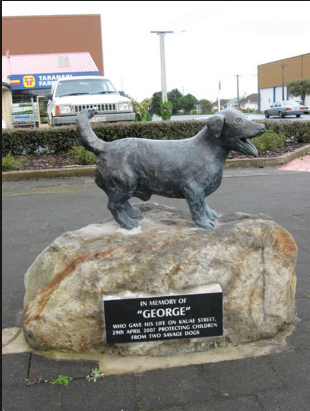|
Surf Highway 45
State Highway 45 (SH 45) is a New Zealand state highway which has the moniker of the ''Surf Highway'' due to the number of prominent surfing breaks that are accessible from it. It is two-line single carriageway for most of its length, with at-grade intersections and property access' in both urban and rural areas. Route SH 45 leaves at the corner of Leach and Eliot streets north-east of the New Plymouth CBD. It then continues west along the New Plymouth one-way network (westbound Leach and Vivian streets, eastbound Powderham and Courtenay streets) then onto Devon St West and South Road exiting New Plymouth via the south-western suburbs. It then heads south-west along the Taranaki coastal plain passing through Oakura and ŇĆkato. At Cape Egmont it turns south-east following the coast passing the Oaonui production station and through ŇĆpunake and Manaia before terminating at the crossroad intersection of Waihi, Denby and South Roads in Hawera, where it again meets SH 3. See ... [...More Info...] [...Related Items...] OR: [Wikipedia] [Google] [Baidu] |
New Plymouth
New Plymouth ( mi, NgńĀmotu) is the major city of the Taranaki region on the west coast of the North Island of New Zealand. It is named after the English city of Plymouth, Devon from where the first English settlers to New Plymouth migrated. The New Plymouth District, which includes New Plymouth City and several smaller towns, is the 10th largest district (out of 67) in New Zealand, and has a population of ‚Äď about two-thirds of the total population of the Taranaki Region and % of New Zealand's population. This includes New Plymouth City (), Waitara (), Inglewood (), ŇĆakura (), ŇĆkato (561) and Urenui (429). The city itself is a service centre for the region's principal economic activities including intensive pastoral activities (mainly dairy farming) as well as oil, natural gas and petrochemical exploration and production. It is also the region's financial centre as the home of the TSB Bank (formerly the Taranaki Savings Bank), the largest of the remaining non-governm ... [...More Info...] [...Related Items...] OR: [Wikipedia] [Google] [Baidu] |
ŇĆkato
ŇĆkato is a small town in rural Taranaki, New Zealand. It is situated about 25 minutes drive around the coast from New Plymouth on State Highway 45. Oakura is 12 km to the north-east, and Warea is 9 km to the south-west. The place offers popular rocky surfing spots around coastal beaches. The town was established as a military settlement in the 1860s. The New Zealand Ministry for Culture and Heritage gives a translation of "place of Kato" for . While "Kato" was probably a personal name, an alternative translation is "place of full tide/tsunami". In July 2020, the name of the locality was officially gazetted as ŇĆkato by the New Zealand Geographic Board. ŇĆkato has all the elements of a New Zealand rural community with sporting facilities (rugby grounds, bowling club, squash courts, tennis courts and swimming pool), Coastal Taranaki School, a police station, and a volunteer fire brigade. ŇĆkato was also notable as the home of Okato Cheese which was manufactured by ... [...More Info...] [...Related Items...] OR: [Wikipedia] [Google] [Baidu] |
Rahotu
Rahotu is a community in the west of Taranaki, in the North Island of New Zealand. It is located on State Highway 45, 16 kilometres north of ŇĆpunake and 11 km south of Warea. The New Zealand Ministry for Culture and Heritage gives a translation of "Long for the sun" for . History In 1826, on the eastern side of Rahotu, a pńĀ of the NgńĀti Maru was the site of a battle with Waikato MńĀori. On 29 April 1834, a 240-ton barque called ''Harriet'' was wrecked off the coast near Rahuto, and some of the crew including the captain's wife and two young children were captured by local MńĀori. They were rescued by HMS ''Alligator'' five months later. The ''Harriets anchor is displayed outside the Rahotu Hotel. A constabulary camp was formed at Rahotu in 1881 and a telegraph station established. The current town was settled in the 1880s and was well established by the early 20th century. Demographics The Cape Egmont statistical area covers , including Warea, Pungarehu, Pariha ... [...More Info...] [...Related Items...] OR: [Wikipedia] [Google] [Baidu] |
Manaia, Taranaki
Manaia is a rural town in South Taranaki District, New Zealand. ŇĆpunake is 29 km to the northwest, and HńĀwera is 13 km to the southeast. Kaponga is 15 km north. State Highway 45 passes through the town. Manaia is named after the former MńĀori chief of the district, Hukunui Manaia. The population was 960 in the 2013 Census, an increase of 36 from 2006. History and culture MńĀori history The mouth of the Kapuni River was the site of two pńĀ settled by NgńĀti Ruanui in the 1800s: Orangi-tuapeka PńĀ on the western banks and Waimate PńĀ on the east.Buist, A. G. (1962). Excavation of a house-floor at Waimate Pa. New Zealand Archaeological Association Newsletter, 5(3), 184-187. Orangi-tuapeka PńĀ was occupied by Wiremu Kńęngi Moki Te MatakńĀtea in 1833 and 1834, where he defeated Waikato Tainui forces led by PŇćtatau Te Wherowhero, ending Waikato raids into Taranaki. In October 1834, the area was bombarded by British troops aboard the HMS ''Alligator'', in an atte ... [...More Info...] [...Related Items...] OR: [Wikipedia] [Google] [Baidu] |
New Zealand State Highway Network
The New Zealand state highway network is the major national highway network in New Zealand. Nearly 100 roads in the North and South Islands are state highways. All state highways are administered by the NZ Transport Agency. The highways were originally designated using a two-tier system, national (SH 1 to 8) and provincial, with national highways having a higher standard and funding priorities. Now all are state highways, and the network consists of SH 1 running the length of both islands, SH 2 to 5 and 10 to 59 in the North Island, and SH 6 to 8 and 60 to 99 in the South Island, numbered approximately north to south. State highways are marked by red shield-shaped signs with white numbering (shields for the former provincial highways were blue). Road maps usually number state highways in this fashion. Of the total state highway network, New Zealand currently has of motorways and expressways with grade-separated access and they carry ten percent of all New Zealand traffic. The ... [...More Info...] [...Related Items...] OR: [Wikipedia] [Google] [Baidu] |
Surfing
Surfing is a surface water sport in which an individual, a surfer (or two in tandem surfing), uses a board to ride on the forward section, or face, of a moving wave of water, which usually carries the surfer towards the shore. Waves suitable for surfing are primarily found on ocean shores, but can also be found in standing waves in the open ocean, in lakes, in rivers in the form of a tidal bore, or in wave pools. The term ''surfing'' refers to a person riding a wave using a board, regardless of the stance. There are several types of boards. The Moche of Peru would often surf on reed craft, while the native peoples of the Pacific surfed waves on alaia, paipo, and other such water craft. Ancient cultures often surfed on their belly and knees, while the modern-day definition of surfing most often refers to a surfer riding a wave standing on a surfboard; this is also referred to as stand-up surfing. Another prominent form of surfing is body boarding, where a surfer rides ... [...More Info...] [...Related Items...] OR: [Wikipedia] [Google] [Baidu] |
Taranaki
Taranaki is a region in the west of New Zealand's North Island. It is named after its main geographical feature, the stratovolcano of Mount Taranaki, also known as Mount Egmont. The main centre is the city of New Plymouth. The New Plymouth District is home to more than 65 per cent of the population of Taranaki. New Plymouth is in North Taranaki along with Inglewood and Waitara. South Taranaki towns include HńĀwera, Stratford, Eltham, and ŇĆpunake. Since 2005, Taranaki has used the promotional brand "Like no other". Geography Taranaki is on the west coast of the North Island, surrounding the volcanic peak of Mount Taranaki. The region covers an area of 7258 km2. Its large bays north-west and south-west of Cape Egmont are North Taranaki Bight and South Taranaki Bight. Mount Taranaki is the second highest mountain in the North Island, and the dominant geographical feature of the region. A MńĀori legend says that Mount Taranaki previously lived with the Tongariro, Ngaur ... [...More Info...] [...Related Items...] OR: [Wikipedia] [Google] [Baidu] |
Cape Egmont
Cape Egmont, splitting Northern and Southern Taranaki Bights, is the westernmost point of Taranaki, on the west coast of New Zealand's North Island. It is located close to the volcanic cone of Mount Taranaki or Mount Egmont. It was named ''Kaap Pieter Boreel'' by Dutch explorer Abel Tasman in 1642, but renamed ''Cape Egmont'' by British explorer James Cook in 1769. (Note: Tasman did not sight Mount Taranaki, due to bad visibility, but Cook did, and after naming the mountain Mount Egmont, bestowed the same name on the promontory, which became the enduring name). Ironically, the cape retained a Dutch name, as Cook named the mountain and cape after the Earl of Egmont, who claimed descent of the Dutch House of Egmond. In July 1862, Kapoaiaia near Cape Egmont was the site of a hui between 600 members of Taranaki, NgńĀti Ruanui, NgńĀ Rauru and Whanganui MńĀori iwi, discussing the First Taranaki War (1860‚Äď1861). There, it was agreed that the lands East and West of New Plymouth (T ... [...More Info...] [...Related Items...] OR: [Wikipedia] [Google] [Baidu] |
ŇĆpunake
ŇĆpunake is a small town on the southwest coast of Taranaki in New Zealand's North Island. It is located 45 kilometres southwest of New Plymouth. Rahotu is 16 km to the northwest. Manaia is 29 km to the southeast. State Highway 45 passes through the town. The town has a population of History and culture Pre-European history In 1833 local chief Wiremu Kńęngi Moki Te MatakńĀtea held off a war party from Waikato for several weeks with a single musket, and eventually triumphed. The site of Te Namu PńĀ is along the coast, just north of the town. European settlement The town was first settled by Europeans in the 1860s, when British army soldiers landed at ŇĆpunake in April 1865 in the Second Taranaki War. By May, soldiers had constructed the ŇĆpunake Redoubt, where 350 soldiers were stationed. In May 1867, the redoubt was gifted to Wiremu Kńęngi Moki Te MatakńĀtea's people, and the area became a location for flax mills, outside European influence. British soldie ... [...More Info...] [...Related Items...] OR: [Wikipedia] [Google] [Baidu] |




